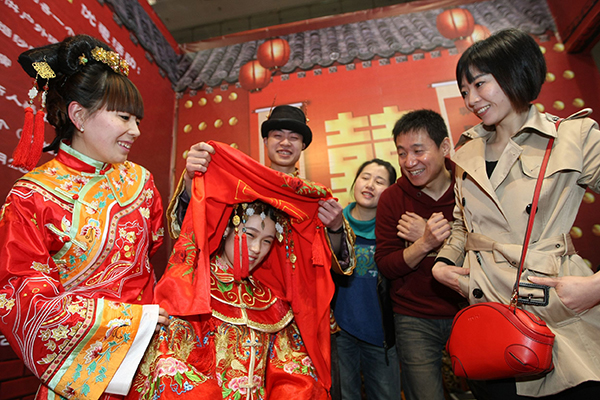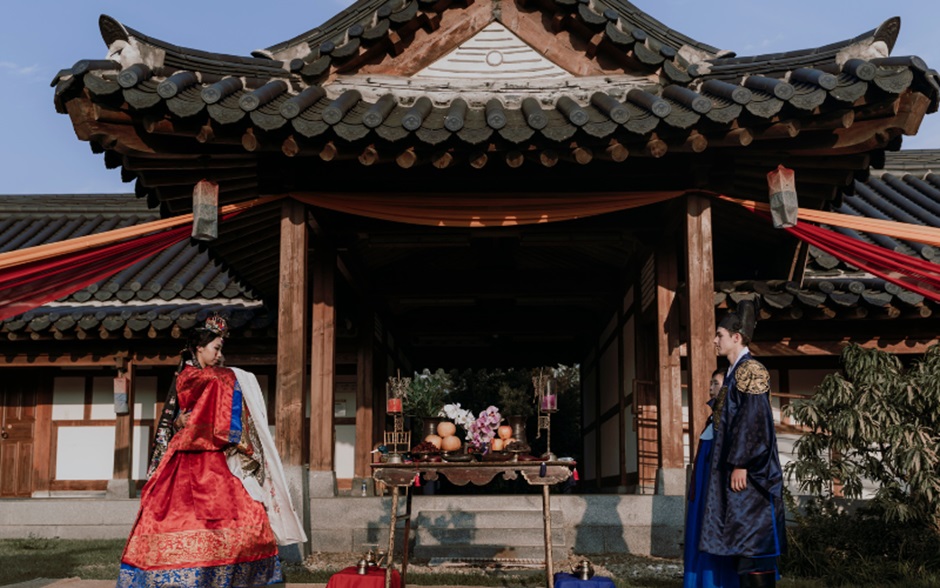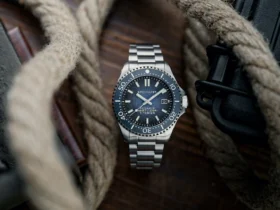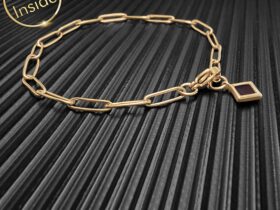Wedding dress styles are rapidly evolving, and one of the most captivating movements is the integration of Korean and Singaporean elements. This combination allows brides to honour both cultural backgrounds while embracing contemporary fashion. This fusion style holds particular significance in Singapore, where multiculturalism is deeply ingrained.
Discover how brides can blend these influences to create a memorable wedding attire.
Understanding Korean Wedding Dress Styles
Korean wedding dresses, particularly the traditional hanbok, are renowned for their elegance and historical significance. The hanbok consists of a jeogori (a short jacket) and a chima (a full, high-waisted skirt). This ensemble symbolises purity, grace, and the cultural heritage of Korea. Modern Korean wedding dresses often incorporate elements of the hanbok, such as the high waistline and voluminous skirts, but use contemporary fabrics and embellishments.
Singaporean Cultural Influences
Singapore’s cultural landscape is rich and diverse, influenced by Chinese, Malay, Indian, and Western traditions. This diversity is reflected in wedding dress styles, which range from the traditional cheongsam and baju kurung to more modern Western-style gowns. Singaporean brides often seek to blend these influences to create a unique look that honours their heritage.
ALSO READ: 5 Tips for Finding Your Perfect Wedding Gown
Combining Korean and Singaporean Elements
- Silhouette and Structure
Korean Hanbok Influence: Incorporate the high waistline and A-line silhouette of the hanbok. This shape is flattering and allows for a variety of fabric choices.
Singaporean Fit: Utilise the sleek and fitted cheongsam design for the bodice, creating a structured look that accentuates the bride’s figure.
- Fabric Choices
Traditional Korean Fabrics: Silk and satin are commonly used in hanboks and add a luxurious feel to the dress.

Singaporean Textiles: Integrate fabrics like batik or songket, which are traditional to Malay culture, to add unique patterns and textures.
- Colour Palette
Korean Pastels: Korean wedding dresses often feature soft pastels such as light pink, mint green, and baby blue, symbolising purity and new beginnings.
Singaporean Brights: Combine these with the bold and vibrant colours seen in Singaporean traditional attire, such as red, gold, and turquoise, to create a striking contrast.
Embellishments and Accessories
- Embroidery and Detailing
Korean Motifs: Incorporate traditional Korean embroidery patterns, such as flowers and birds, which symbolise happiness and prosperity.
Singaporean Details: Add Peranakan beadwork and embroidery, known for its intricate designs and vibrant colours, to the dress.
- Jewellery and Accessories
Korean Headpieces: Use traditional Korean headpieces like the jokduri (a ceremonial coronet) to add a touch of cultural authenticity.
Singaporean Accessories: Complement this with Peranakan jewellery, such as ornate brooches and necklaces, to incorporate elegance and tradition.
Practical Tips for Brides
- Custom Tailoring
Work with a Korean dress bridal shop in Singapore to ensure both Korean and Singaporean elements are seamlessly integrated. These tailors are adept at combining different cultural styles, providing bespoke solutions that cater to personal tastes and preferences.
- Fabric and Colour Consultation
Consult with experts to choose the ideal fabrics and colours. The appropriate material can significantly impact the comfort and aesthetic of the dress. Consider the climate of Singapore, which is typically warm and humid, and choose breathable fabrics accordingly.
- Balancing Tradition and Modernity
Strive to maintain a balance between traditional elements and modern trends. While honouring cultural heritage is necessary, the dress should also reflect contemporary fashion sensibilities. Opt for a modern cut or silhouette but incorporate traditional fabrics and motifs.
Conclusion
The combination of Korean and Singaporean influences in wedding dress styles presents a distinctive and customised take on bridal style. By grasping the essential characteristics of each culture and skillfully blending them together, brides have the opportunity to design a wedding gown that is not just aesthetically pleasing but also holds significant sentimental value.
Visit Artiz Studio to find the perfect gown for your special day.










